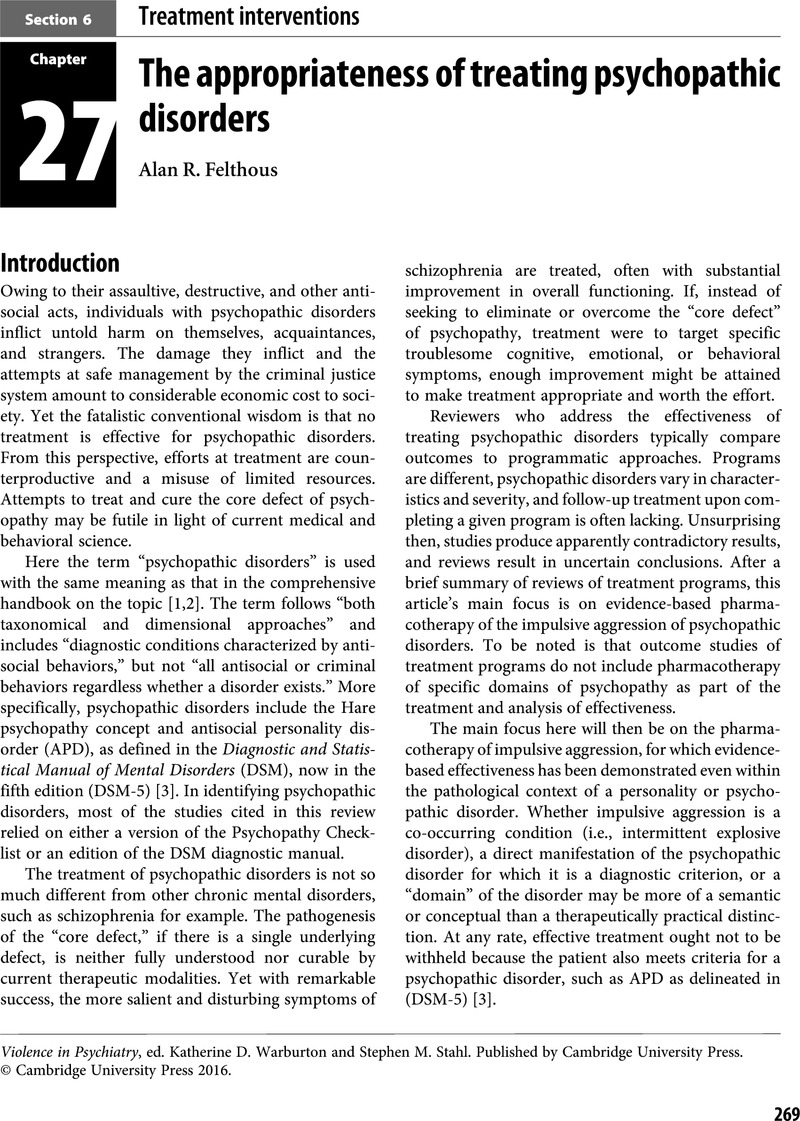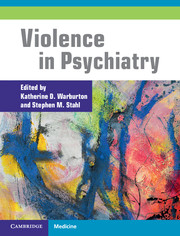Book contents
- Violence in Psychiatry
- Violence in Psychiatry
- Copyright page
- Contents
- Contributors
- Section 1 Statement of the problem
- Section 2 Assessment
- Section 3 Neurobiology
- Section 4 Guidelines
- Section 5 Psychopharmacology
- Section 6 Treatment interventions
- Chapter 24 A new standard of care for forensic mental health treatment: prioritizing forensic intervention
- Chapter 25 Forensic‐focused treatment planning: a new standard for forensic mental health systems
- Chapter 26 Implementing an ecological approach to violence reduction at a forensic psychiatric hospital: approaches and lessons learned
- Chapter 27 The appropriateness of treating psychopathic disorders
- Chapter 28 Psychosocial approaches to violence and aggression: contextually anchored and trauma-informed interventions
- Chapter 29 Comorbid mental illness and criminalness: implications for housing and treatment
- Chapter 30 Crime, violence, and behavioral health: collaborative community strategies for risk mitigation
- Chapter 31 New technologies in the management of risk and violence in forensic settings
- Chapter 32 Risk reduction treatment of psychopathy and applications to mentally disordered offenders
- Index
- References
Chapter 27 - The appropriateness of treating psychopathic disorders
from Section 6 - Treatment interventions
Published online by Cambridge University Press: 19 October 2021
- Violence in Psychiatry
- Violence in Psychiatry
- Copyright page
- Contents
- Contributors
- Section 1 Statement of the problem
- Section 2 Assessment
- Section 3 Neurobiology
- Section 4 Guidelines
- Section 5 Psychopharmacology
- Section 6 Treatment interventions
- Chapter 24 A new standard of care for forensic mental health treatment: prioritizing forensic intervention
- Chapter 25 Forensic‐focused treatment planning: a new standard for forensic mental health systems
- Chapter 26 Implementing an ecological approach to violence reduction at a forensic psychiatric hospital: approaches and lessons learned
- Chapter 27 The appropriateness of treating psychopathic disorders
- Chapter 28 Psychosocial approaches to violence and aggression: contextually anchored and trauma-informed interventions
- Chapter 29 Comorbid mental illness and criminalness: implications for housing and treatment
- Chapter 30 Crime, violence, and behavioral health: collaborative community strategies for risk mitigation
- Chapter 31 New technologies in the management of risk and violence in forensic settings
- Chapter 32 Risk reduction treatment of psychopathy and applications to mentally disordered offenders
- Index
- References
Summary

- Type
- Chapter
- Information
- Violence in Psychiatry , pp. 269 - 278Publisher: Cambridge University PressPrint publication year: 2016



